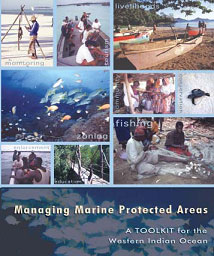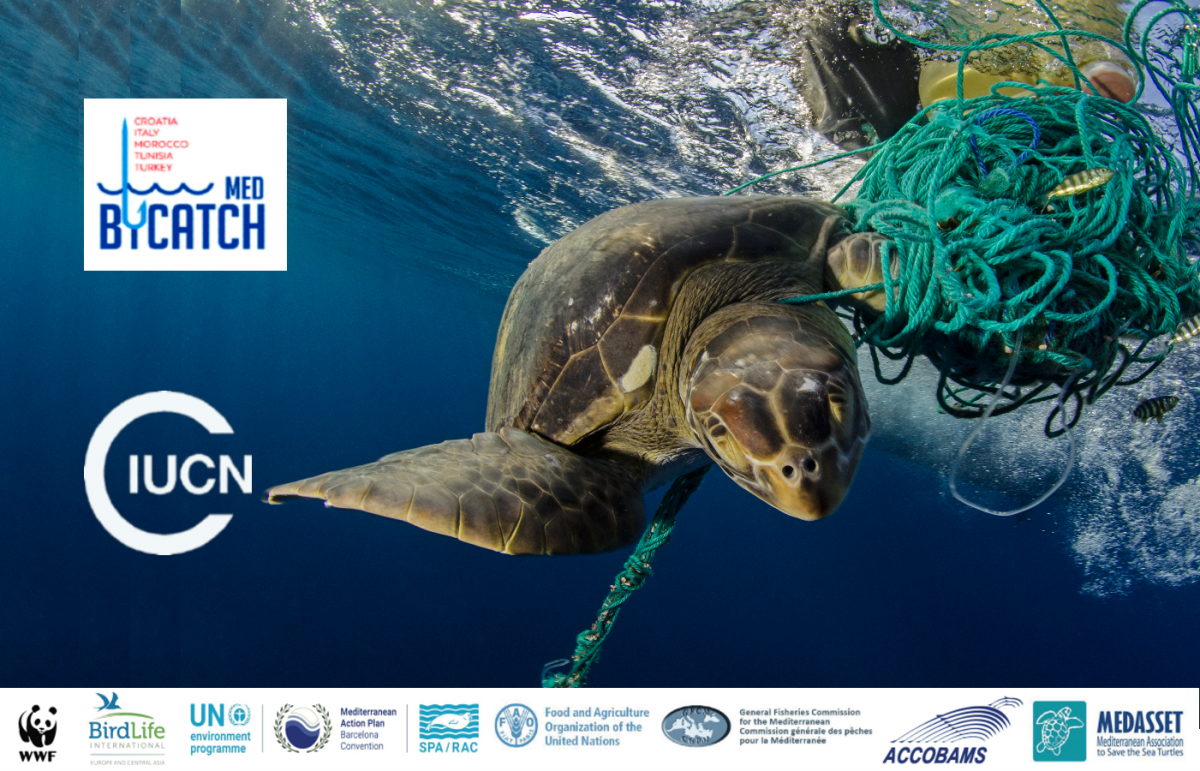Managing Marine Protected Areas - A TOOLKIT for the Western Indian Ocean
The Toolkit aims to act as a first point of call in the search for information on issues that MPA managers and practitioners face in day-to-day operations.

Photo: IUCN
MPAs in the WIO are supported by a host of managers, wardens, rangers, community members and others. These MPA managers are tasked with having to deal with a multitude of different situations, issues and problems on a daily basis, often in remote locations, without easy reference to sources of information or help. These may range from purchasing a boat, managing staff, annual planning, monitoring fish populations in the MPA, building an information centre, consulting local villagers, to writing a proposal to secure funding.
This is not an easy job and requires a diverse array of skills. Recognising this need, partners involved in the IUCN/NORAD WIO Marine Biodiversity Conservation Project decided to publish a Toolkit for managing MPAs in the WIO. This consists of a ring-binder of theme sheets, each of which addresses a key issue faced by an MPA manager, with a focus on the situation in the WIO. The Toolkit also has a complementary website (www.wiomsa.org/mpatoolkit.htm) and CD-ROM.
The Toolkit was designed to support MPA managers in the WIO by providing them with a hands-on guide to a diverse array of topics, ranging from Communications, Monitoring Coral Reefs, Energy Sources, Solid Waste Disposal, to Octopus and Sea Cucumber Fisheries. The Toolkit is designed to address management issues relevant to all types of MPAs, from community based, locally managed areas, to nationally gazetted marine parks.
The geographical scope of the Toolkit comprises Comores, Kenya, Madagascar, Mauritius, Mozambique, Réunion (France), Seychelles, Somalia, South Africa (but only Kwazulu Natal) and Tanzania; the ten countries that are signatory to the Nairobi Convention. The Toolkit represents a significant review of global information but draws heavily on information from the WIO region, with case studies from nine countries. Although written for the WIO where it will be distributed, it is certainly relevant to other tropical regions.
This first Edition of the Toolkit contains 78 theme sheets, most of which include a case study to help illustrate each topic. The Toolkit is arranged in two parts: 1) The Management Process and 2) Conservation and Sustainable Use. Although comprehensive, there are certainly gaps and emerging issues that are not yet included. The Toolkit has been designed as a ring-binder so it is a dynamic product that will be revised as new information becomes available, or as new sheets are developed. WIOMSA and GEMPA-EA have been instrumental in the development of this Toolkit and will act as the focal point for this ongoing review and updating. Comments and reviews should be addressed to: secretary@wiomsa.org.
It is now widely accepted that MPAs in their various guises are one of the most effective ways of protecting marine biodiversity and also serve as a vital management tool for coastal fisheries. The latter is particularly relevant in the WIO where coastal people still widely depend on marine resources for their subsistence and livelihoods. Two economic sectors, in particular, benefit from MPAs and demonstrate how MPAs can help to alleviate poverty: fisheries and tourism. There is a growing body of evidence that MPAs can generate substantial income through tourism, and potentially play a major role in the recovery of over-exploited fisheries.
It is intended that this Toolkit will be pivotal in assisting MPA managers in their important role as custodians of the WIO’s marine biodiversity.



